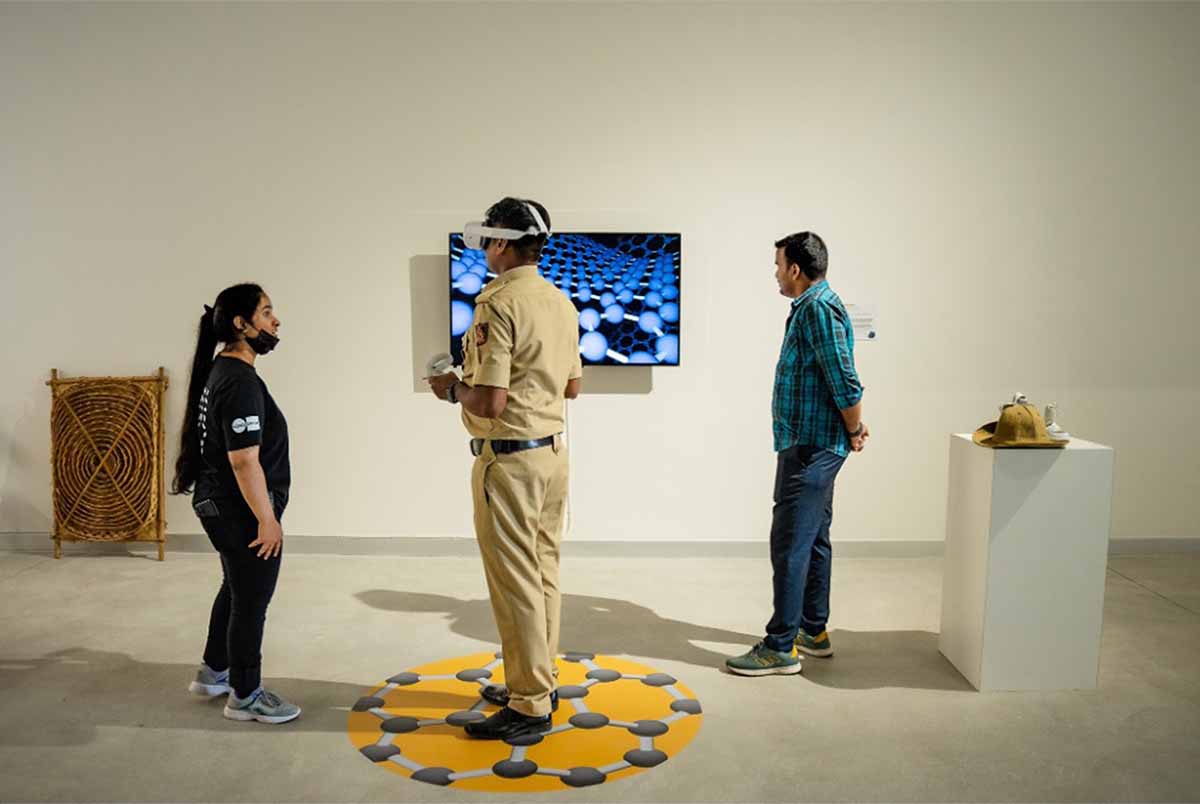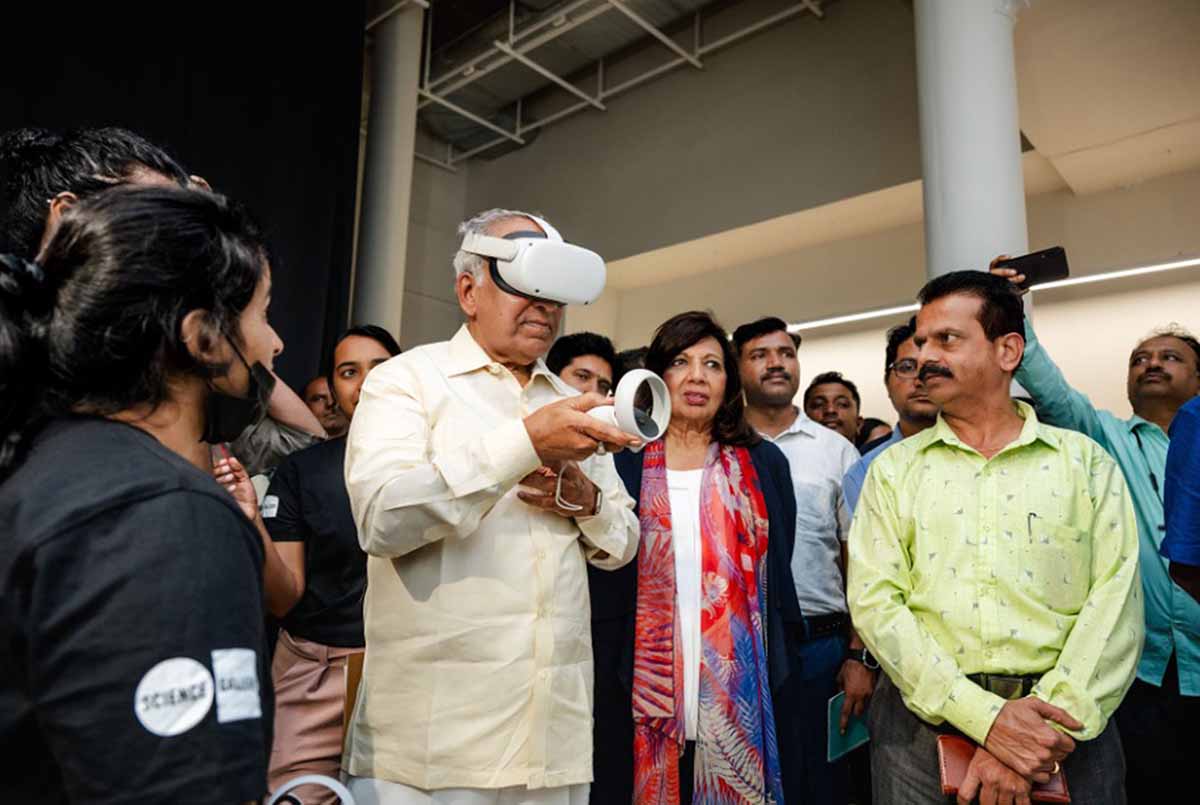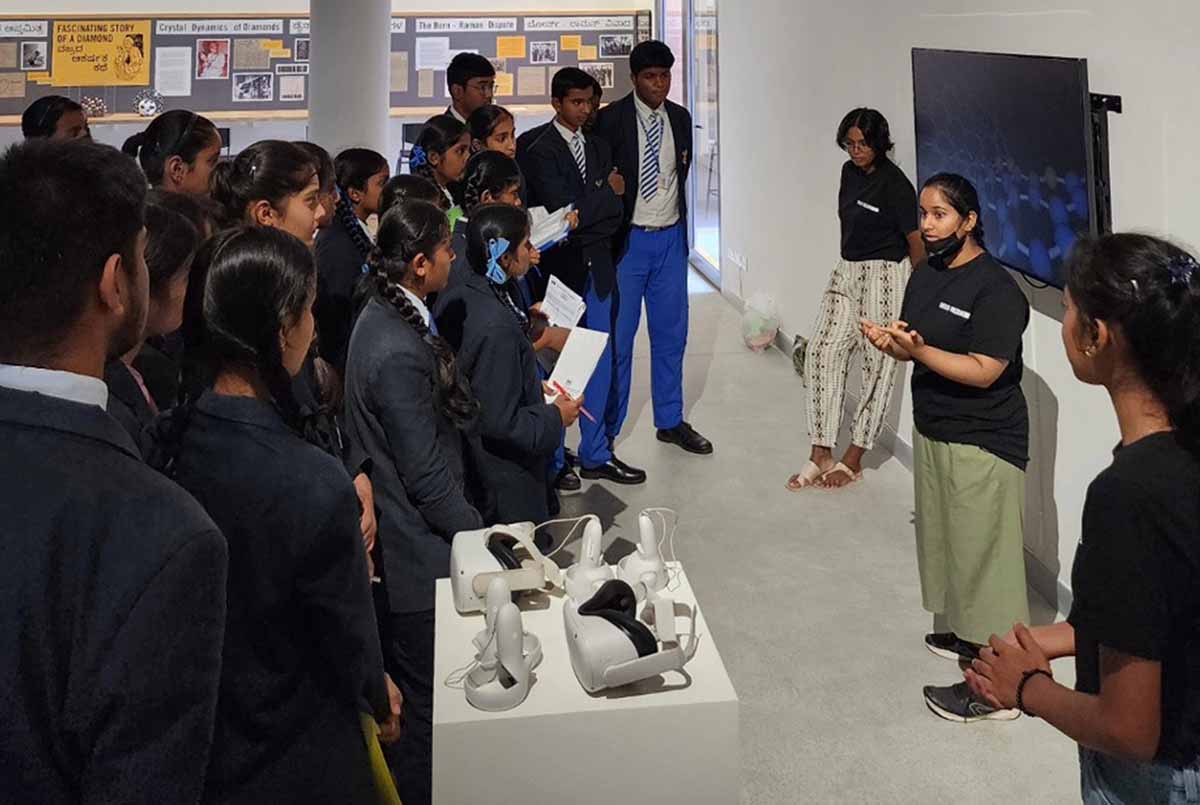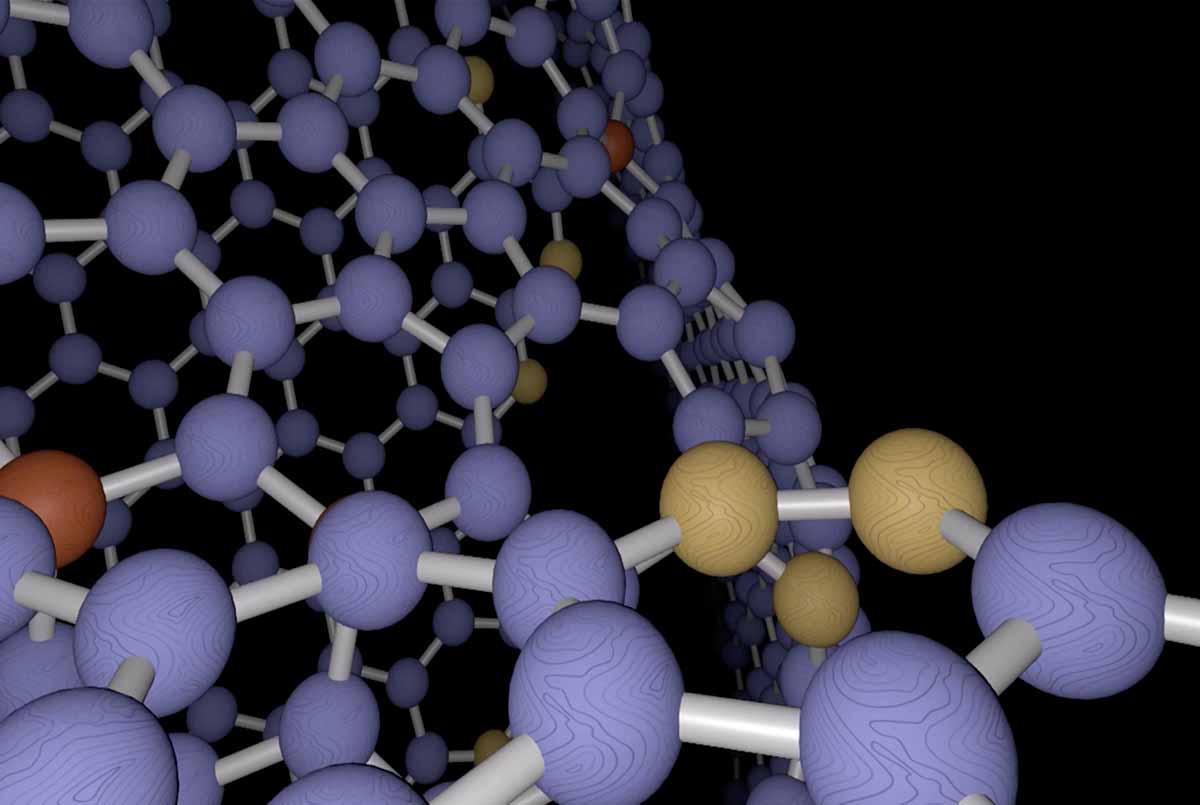CARBON NANOVERSE
2023
virtual reality, duration variable
creative producer: Andrea Rassell
carbon scientists: Jacob Martin, Gabriel Francas, Irene Suarez-Martinez & Nigel Marks
unity development: Callum Wood
supervising producer: Jacob Martin
in collaboration with: the Carbon Group, Curtin University
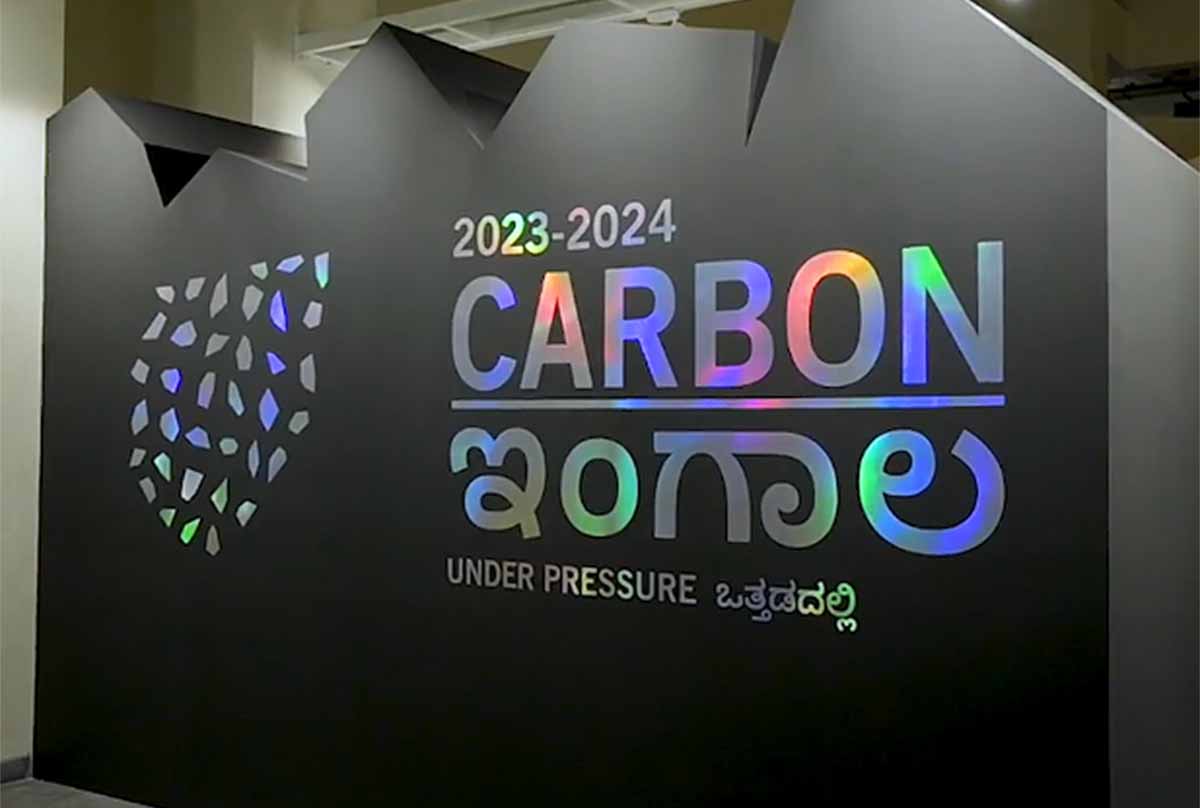
Carbon Nanoverse is virtual reality experience that enables viewers to explore several carbon structures — fullerene, nanotubes, screws, wormholes — and cutting edge non-crystalline structures in representational modes from the classic ball and stick model to ring based meshes.
Carbon has a justifiably bad reputation for its role in climate change and we need to drastically reduce our carbon emissions. Although, this bad carbon is typically emitted into the atmosphere as carbon dioxide, methane and soot. Other carbon materials need a bit of respect because they will be critical to our transition from burning fossil fuels. Lithium-ion batteries, hydrogen fuel cells and supercapacitors will help us reduce our reliance on old sources of energy — and they all use carbon materials.
Many of us are familiar with carbon’s crystalline forms, such as diamond or the graphite that makes up pencil lead, but one of the enduring mysteries of carbon is the structure of its non-crystalline forms. These are industrially significant forms of carbon — they are used for broad applications including the storage and transport of renewable hydrogen.
Unlike carbon’s neatly ordered crystalline forms, non-crystalline forms have complex disordered structures that are critical to their functional properties. Understanding of these structures has stalled because experimental observations are restricted to the 2D plane. We have developed a computational microscope that can self-assemble disordered carbons for the first time. While these structures bear remarkable resemblance to experimental models, they remain challenging to analyse.
The development of our 3D virtual reality experience has broadened the toolkit that scientists have to work with and perceive non-crystalline carbon models. It also provides an immersive way to engage public audiences and industry partners.
